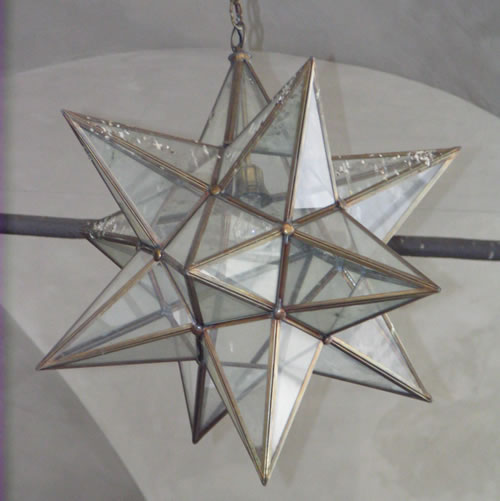Skip over navigation
This lampshade was photographed in Rimini in Italy. In Africa candle holders exactly like this are often made from wire.

There's another image you might like to take a look at in the Notes .



Or search by topic
Number and algebra
Geometry and measure
Probability and statistics
Working mathematically
Advanced mathematics
For younger learners
Lighting up Time
Age 7 to 14
Challenge Level 





- Problem
- Teachers' Resources
This lampshade was photographed in Rimini in Italy. In Africa candle holders exactly like this are often made from wire.

- Do you know the mathematical name for this shape?
- Can you see lots of triangles?
- What "type" of triangles are they and how many of them were needed to make this lampshade?
- What other shapes can you see?
- Could you make a polyhedron like this from card? How would you do it?
There's another image you might like to take a look at in the Notes .
You may also like
Tetrahedron Faces
One face of a regular tetrahedron is painted blue and each of the remaining faces are painted using one of the colours red, green or yellow. How many different possibilities are there?
Face Painting
You want to make each of the 5 Platonic solids and colour the faces so that, in every case, no two faces which meet along an edge have the same colour.
A Mean Tetrahedron
Can you number the vertices, edges and faces of a tetrahedron so that the number on each edge is the mean of the numbers on the adjacent vertices and the mean of the numbers on the adjacent faces?

